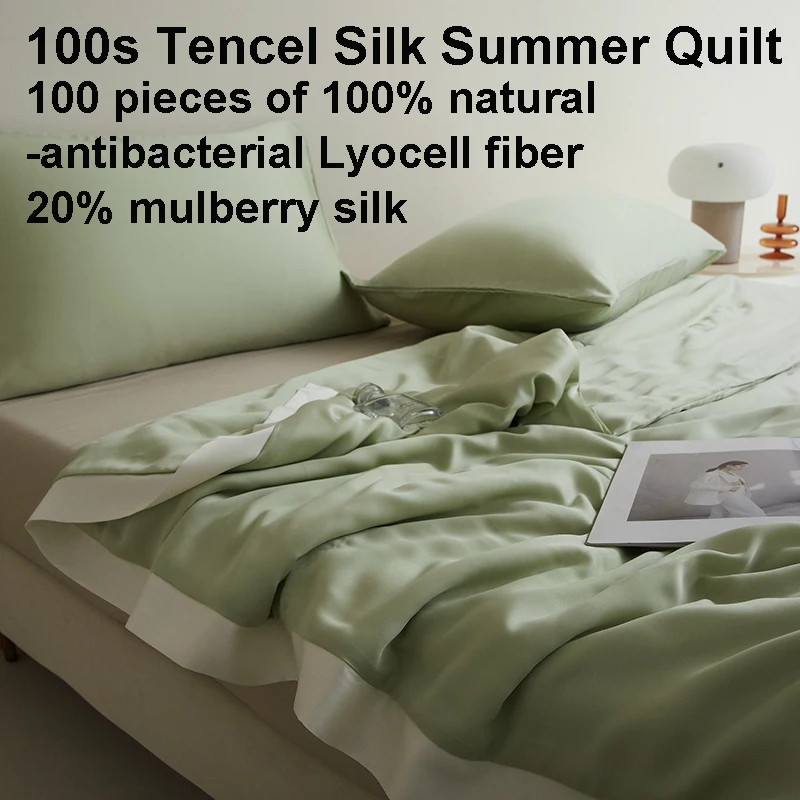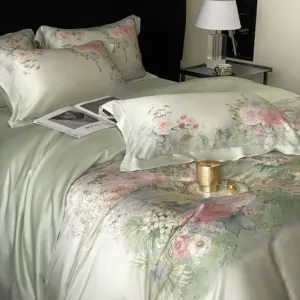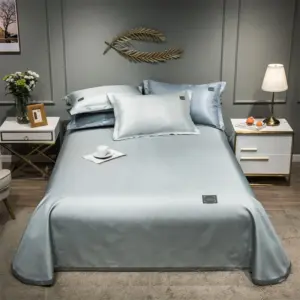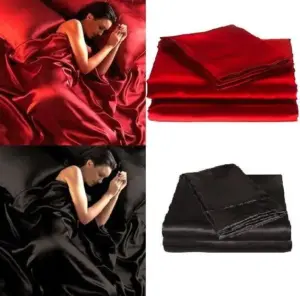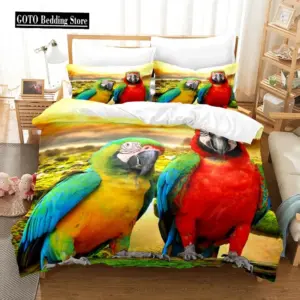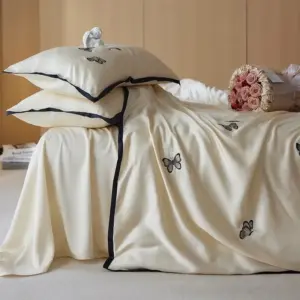Introduction: Why Consider Sustainable Alternatives to Traditional Silk
Traditional silk has long been cherished for its unmatched luxury. With its incredible softness, natural cooling properties, and distinctive luster, silk bedding represents the pinnacle of bedroom comfort for many. This ancient textile, with over 5,000 years of history, continues to be highly sought after for premium bedding products.
However, as environmental awareness grows, so does concern about conventional silk production. Traditional sericulture raises several issues:
- Silkworm welfare concerns, as conventional production involves boiling silkworm cocoons with the pupae still inside
- Resource-intensive cultivation requiring significant water usage
- Chemical treatments often used in processing and dyeing
- Environmental impact from intensive mulberry tree farming
Today’s conscious consumers increasingly seek bedding options that align with their values while still delivering the luxury experience they desire. This has driven remarkable innovation in the textile industry, with sustainable alternatives now available across several categories:
- Regenerated cellulose fibers derived from plant sources
- Natural plant-based fibers with silk-like properties
- Innovative bio-engineered materials that replicate silk’s characteristics
At Sanctuary Soft, we understand this evolving landscape, offering both premium Mulberry silk sheets and a range of exceptional vegan alternatives to Mulberry silk for those seeking cruelty-free luxury.
Regenerated Cellulose Fibers: Silk-Like Luxury with Sustainable Credentials
Regenerated cellulose fibers represent some of the most promising sustainable alternatives to traditional silk. These materials begin as plant matter—typically wood pulp from sustainably managed forests—and undergo processing to extract pure cellulose. This cellulose is then transformed into smooth, continuous fibers that can remarkably mimic silk’s desirable qualities.
What makes these options particularly eco-friendly is their production method. Many use closed-loop systems that recapture and reuse solvents, dramatically reducing chemical waste. The result is a minimal environmental footprint compared to both traditional silk and petroleum-based synthetics.
These materials excel at providing the sensory experience silk lovers crave: exceptional smoothness against the skin, beautiful drape, breathability, and moisture management. For those seeking silk bedding alternatives that don’t compromise on luxury or environmental responsibility, regenerated cellulose fibers offer compelling options.
Tencel™ Lyocell: The Premium Sustainable Choice
Tencel Lyocell stands as perhaps the most impressive silk alternative for luxury bedding. This remarkable fiber begins as sustainably harvested eucalyptus wood pulp and transforms through an award-winning closed-loop production process that recovers 99% of solvents used.
What makes Tencel exceptional for bedding:
- Extraordinary smoothness that rivals or surpasses silk
- Superior moisture management, wicking away humidity for comfortable sleep
- Natural temperature regulation that keeps you cool in summer and warm in winter
- Biodegradability at end-of-life, leaving minimal environmental impact
- Hypoallergenic properties ideal for sensitive skin
Unlike silk, which requires delicate handling, Tencel offers improved durability and easier care while maintaining that sought-after silky feel against your skin. Our eucalyptus silk sheets collection showcases how this remarkable material delivers premium comfort with environmental responsibility.
Modal and Bamboo Lyocell: Silky Softness from Nature
Modal and bamboo lyocell provide additional eco-friendly options that deliver silk-like luxury with distinct advantages.
Modal, derived from sustainable beechwood forests, offers exceptional softness and remarkable resistance to shrinkage or stretching. Its natural sheen resembles silk, making it particularly suitable for pillowcases and duvet covers. Modal maintains its beauty through repeated washing, often becoming even softer over time.
Bamboo lyocell utilizes fast-growing bamboo—a highly renewable resource requiring minimal water and no pesticides. When processed through the environmentally responsible lyocell method (not to be confused with less sustainable bamboo viscose), it creates a sumptuous fabric with natural antibacterial properties. These qualities make bamboo silk sheets particularly excellent for those with sensitive skin or allergies.
Both alternatives offer easier care than traditional silk, typically allowing machine washing on gentle cycles and requiring less specialized maintenance while delivering similar sensory benefits.
Cupro: The Recycled Alternative
Cupro presents a unique approach to sustainable luxury by upcycling cotton linters—the ultra-short fibers that cling to cotton seeds after ginning, which would otherwise become waste. Through careful processing, these fibers transform into a sumptuously smooth material with remarkable silk-like drape.
This innovative textile excels in bedding applications, particularly pillowcases, where its natural temperature regulation and hypoallergenic properties create an ideal sleep environment. Cupro’s ability to wick moisture while remaining breathable mimics silk’s comfort without requiring animal products.
While typically more affordable than premium silk, cupro still delivers a luxury experience with added environmental benefits. Its production diverts agricultural waste while creating a beautiful, functional textile that performs admirably in the bedroom.
Plant-Based Natural Fibers: Direct Harvest Alternatives
Unlike regenerated cellulose fibers that undergo significant processing, directly harvested plant fibers offer a different approach to sustainable luxury. These materials come from plants grown specifically for their fiber content and typically require less intensive manufacturing.
The environmental benefits are substantial: reduced water consumption, minimal pesticide requirements, and natural biodegradability. Many plant fibers also contribute to soil health during cultivation, creating positive agricultural impacts beyond the textile itself.
While plant fibers naturally tend toward sturdier textures than silk, special processing techniques like enzyme treatments and mechanical softening can transform them into remarkably silky materials. Understanding how these natural silk alternatives compare to traditional fabrics helps consumers make informed choices based on their specific preferences and values.
Hemp Silk: Durable Luxury with Sustainability
Hemp stands out as an environmental superstar among textile crops. It requires minimal water, enriches soil health, naturally resists pests (reducing pesticide needs), and produces more fiber per acre than cotton. When specially processed to break down its naturally sturdy fibers, hemp can achieve a surprisingly silk-like texture with exceptional durability.
Hemp bedding offers several distinctive advantages:
- Outstanding breathability that improves sleep quality
- Natural temperature regulation suitable for year-round use
- Remarkable resistance to mold, mildew, and bacteria
- UV-resistant properties that prevent degradation from sunlight
- Increasing softness with each wash (unlike silk, which can become more fragile)
For those seeking long-term value in their bedding investment, hemp provides exceptional durability while delivering comfort that actually improves over time. This makes it particularly suitable for sheets that receive frequent use and washing.
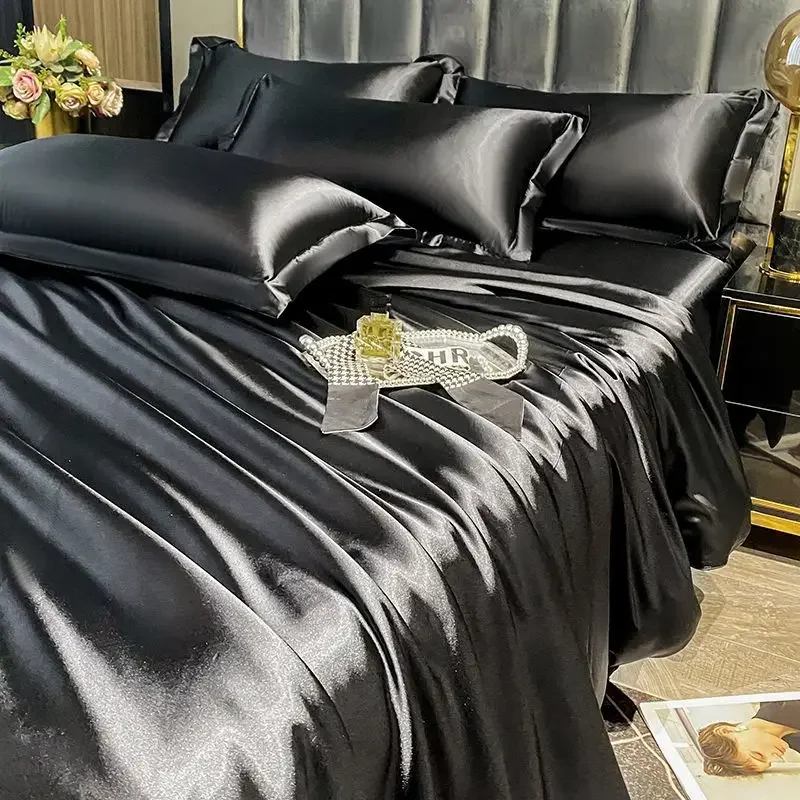
Ramie and Lotus Fibers: Rare Natural Luxuries
For the most discerning sustainable luxury seekers, ramie and lotus fibers offer truly exceptional alternatives with fascinating origins.
Ramie, derived from nettles, is one of the oldest textile fibers known to humanity. When properly processed, it develops a natural silky luster and remarkable strength. Its exceptional moisture-wicking abilities make it particularly suitable for hot sleepers seeking cooling bedding with natural temperature regulation.
Lotus fiber represents perhaps the most exclusive sustainable textile. Traditionally harvested by hand from the stems of lotus plants in Southeast Asia, particularly Myanmar and Cambodia, these rare fibers create incredibly soft, breathable fabric with natural temperature regulation. The labor-intensive harvesting process contributes to its premium status and limited availability.
Both materials offer hypoallergenic properties ideal for sensitive skin, along with the satisfaction of supporting traditional textile arts with minimal environmental impact. Their rarity makes them specialty options for those seeking truly unique sustainable luxury.
Innovative and Emerging Alternatives: The Future of Silk-Like Luxury
The textile innovation landscape is rapidly evolving, with biotechnology and materials science creating exciting new possibilities for sustainable silk alternatives. These cutting-edge approaches often combine the best attributes of natural materials with technological advances to create fibers with optimized performance.
The growth in this sector reflects increasing consumer demand for textiles that deliver luxury experiences without environmental compromise. Investment in textile innovation has accelerated dramatically, creating pathways for next-generation materials that could fundamentally change how we approach luxury bedding.
These developments represent the frontier of environmentally friendly silk fabrics, with new options continuously emerging that push the boundaries of what’s possible in sustainable luxury.
Lab-Grown Silk: Revolutionary Bioengineered Luxury
Perhaps the most exciting development in sustainable silk alternatives comes from biofabrication, where microorganisms produce silk proteins through fermentation processes. This approach creates true silk fibers without involving silkworms, essentially “growing” silk in laboratories.
Companies like Bolt Threads have pioneered technologies such as Microsilk™, which uses genetically engineered yeast to produce the same proteins found in spider silk. The environmental benefits are substantial:
- Dramatically reduced land and water requirements compared to traditional sericulture
- No animal involvement, making it completely vegan
- Controllable production not dependent on agricultural seasons or climate
- Customizable properties like strength, elasticity, and texture
The resulting fibers can be virtually indistinguishable from traditional silk, offering identical performance characteristics with superior sustainability credentials. While currently limited in availability and commanding premium prices, these innovations represent the potential future of luxury textiles as production scales and technologies mature.
Orange Fiber and Rose Petal Silk: Upcycled Plant Innovations
Some of the most creative approaches to silk alternatives come from unexpected agricultural byproducts. Orange fiber and rose petal silk represent innovative ways to transform waste streams into luxury textiles.
Orange fiber utilizes citrus juice byproducts—millions of tons generated annually by the juicing industry—to create silky cellulose material with a subtle citrus essence. This approach not only creates beautiful textiles but also diverts agricultural waste from landfills.
Similarly, rose petal silk upcycles discarded flowers from the perfume and floral industries. The resulting fabric retains delicate floral notes while providing exceptional softness reminiscent of silk. Both materials have attracted attention from luxury fashion houses seeking sustainable innovations.
In bedding applications, these materials offer unique sensory experiences beyond simple tactile comfort. Imagine pillowcases with the subtle, soothing aromatherapy properties of roses or citrus—creating multisensory sleep environments while supporting circular economy principles.
Our vegan silk bedding collection showcases how these innovative plant-based alternatives can deliver exceptional sleep experiences with environmental responsibility.
Ethical Considerations: Navigating “Vegan Silk” and Synthetic Alternatives
When exploring silk alternatives, terminology can sometimes create confusion. The term “vegan silk” simply indicates materials free from animal products—it doesn’t necessarily guarantee environmental sustainability.
Polyester satin represents the most common example of this distinction. While technically “vegan” as it contains no animal products, conventional polyester derives from petroleum, is not biodegradable, and releases microplastics when washed. Despite its silk-like appearance and affordability, its environmental impact makes it less aligned with comprehensive sustainability values.
Peace Silk (also called Ahimsa Silk) offers another nuanced option. This traditional silk allows moths to emerge naturally before harvesting cocoons, addressing animal welfare concerns. However, as an animal product, it isn’t vegan, though many consider it more ethical than conventional silk.
To navigate these considerations, look for credible certifications:
– GOTS (Global Organic Textile Standard) for organic materials
– OEKO-TEX for harmful substance testing
– FSC (Forest Stewardship Council) for wood-derived fibers
– Bluesign for environmental production standards
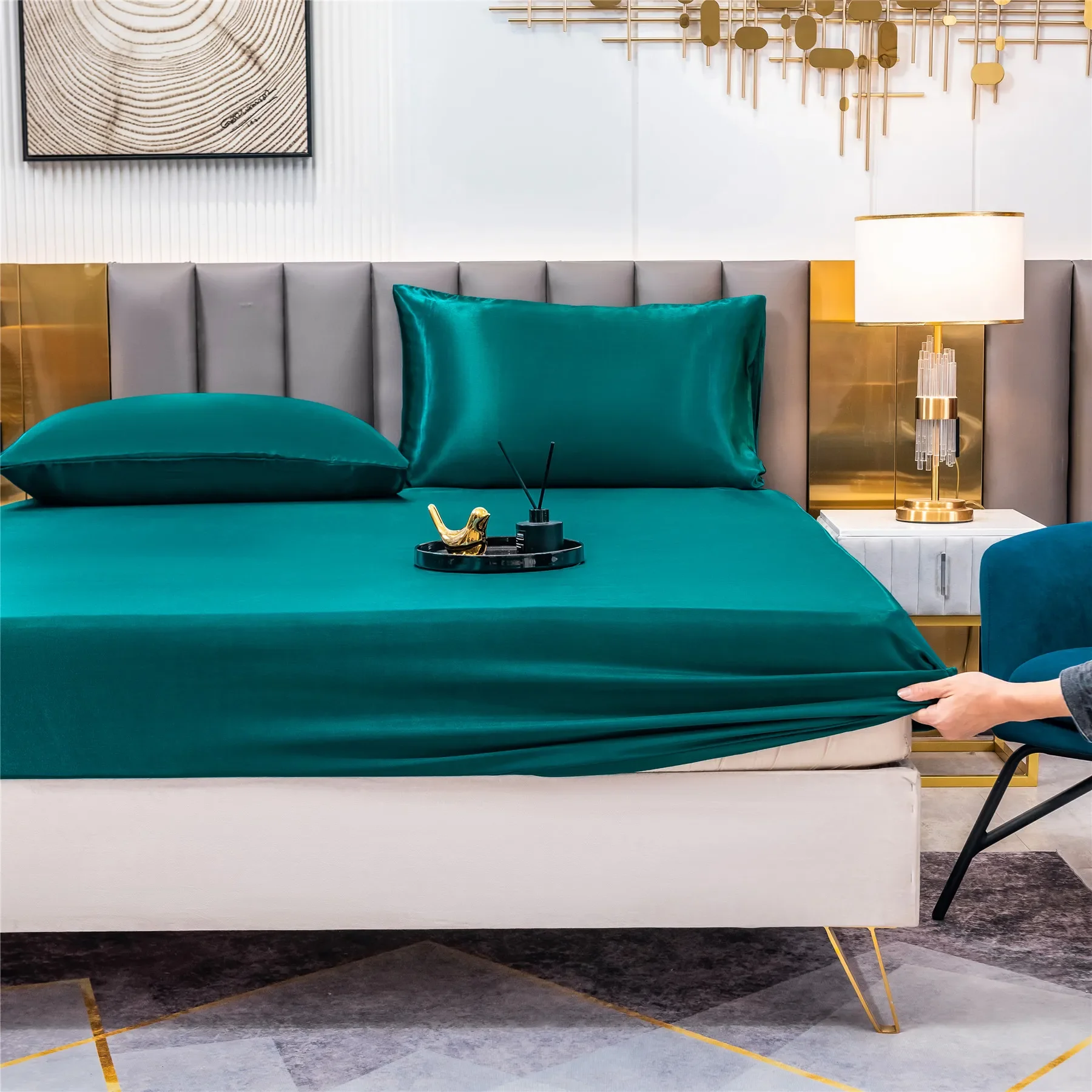
These standards help verify claims about eco-conscious silk bedding and ensure your purchase aligns with your values.
Choosing the Right Silk Alternative for Your Bedding
Selecting the perfect silk alternative involves considering several personal factors:
Sleep temperature preferences: Hot sleepers may prioritize the exceptional cooling properties of Tencel or bamboo, while those who sleep cold might prefer the balanced temperature regulation of hemp.
Skin sensitivity: Those with reactive skin should consider hypoallergenic options like Tencel, bamboo lyocell, or cupro, which minimize potential irritation.
Tactile preferences: If you love silk primarily for its smoothness, regenerated cellulose fibers typically provide the closest match. For those who value silk’s distinctive drape and weight, cupro offers a remarkably similar feel.
Care requirements: Consider how much maintenance you’re willing to perform. Hemp and Tencel generally offer easier care than traditional silk.
Budget considerations: While most sustainable alternatives cost less than premium silk, prices vary significantly between options.
Environmental priorities: Each alternative excels in different aspects of sustainability—water conservation, carbon footprint, chemical usage, etc.
Understanding the complete guide to Mulberry silk bed sheets provides helpful comparison points for evaluating alternatives against traditional silk’s benchmark qualities.
The Ultimate Comparison: Silk Alternatives for Every Need
| Material | Origin | Key Eco-Benefits | Feel vs. Silk | Ideal For | Durability | Care Complexity | Price Range |
|---|---|---|---|---|---|---|---|
| Tencel Lyocell | Eucalyptus wood pulp | Closed-loop production, sustainable forestry, biodegradable | Extremely similar smoothness, slightly cooler | Hot sleepers, sensitive skin | Excellent | Low (machine washable) | $$$-$$$$ |
| Modal | Beechwood pulp | Renewable resource, biodegradable | Very similar smoothness, less sheen | Year-round comfort | Very Good | Low (machine washable) | $$-$$$ |
| Bamboo Lyocell | Bamboo pulp | Fast-growing renewable, low water use, biodegradable | Similar smoothness, slightly heavier drape | Sensitive skin, antimicrobial needs | Very Good | Low-Medium | $$-$$$ |
| Cupro | Recycled cotton linters | Upcycles agricultural waste | Most similar drape and weight to silk | Luxury appearance, skin sensitivity | Good | Medium | $$-$$$ |
| Hemp Silk | Hemp plant | Low water use, soil regeneration, biodegradable | Initially less smooth, softens with washing | Durability, value-seekers | Outstanding | Low (improves with washing) | $$-$$$ |
| Ramie | Nettle family plants | Low-impact cultivation | Similar luster, initially crisper | Hot climates, cooling properties | Excellent | Medium | $$$-$$$$ |
| Lotus Fiber | Lotus plant stems | Traditional harvesting, minimal processing | Incomparably soft, lightweight | Luxury collectors, unique experiences | Good | High | $$$$$ |
| Lab-Grown Silk | Bioengineered proteins | Minimal land/water use, no animals | Virtually identical to natural silk | True silk experience, vegan values | Very Good | Medium-High | $$$$-$$$$$ |
| Orange Fiber | Citrus byproducts | Upcycles food waste | Silky with unique subtle texture | Sensory experience, waste reduction | Good | Medium | $$$-$$$$ |
| Polyester Satin | Petroleum derivatives | Not eco-friendly | Less breathable, static-prone | Budget priority only | Variable | Low | $ |
For those prioritizing maximum sustainability with luxury feel, Tencel lyocell typically provides the best overall balance. Those seeking the absolute closest match to silk’s distinctive feel might prefer cupro or lab-grown silk. Value-conscious shoppers often find bamboo lyocell or hemp silk offer excellent long-term benefits at moderate price points.
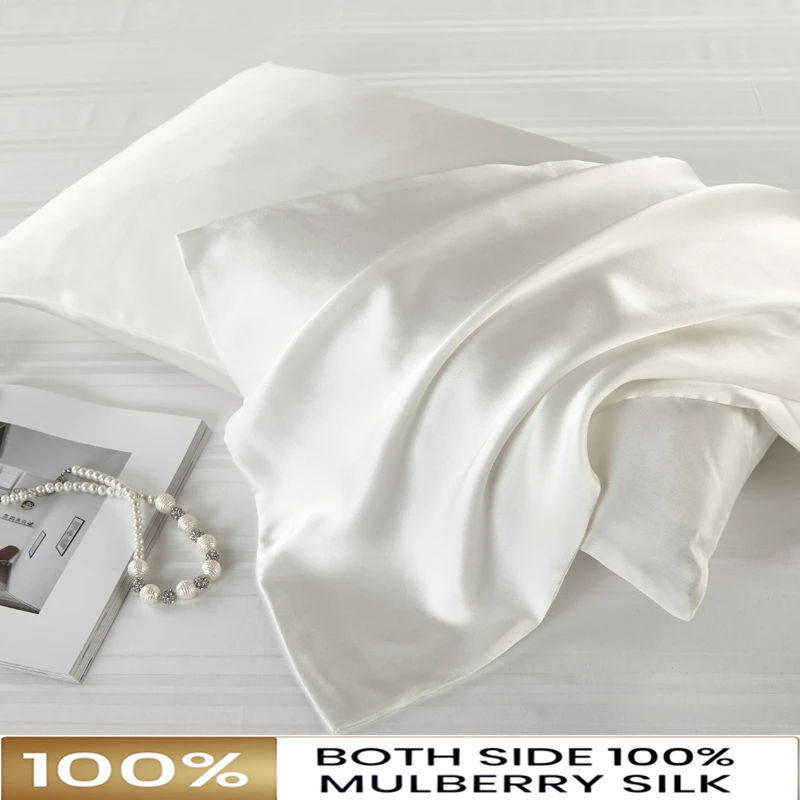
Eucalyptus Silk Bedding Sets, Eucalyptus Silk Sheets
Price range: $360.24 through $393.60 Select options This product has multiple variants. The options may be chosen on the product page- Price range: $267.82 through $306.55 Select options This product has multiple variants. The options may be chosen on the product page
Bamboo Silk Sheets, Cooling Silk Sheets
Price range: $130.76 through $177.80 Select options This product has multiple variants. The options may be chosen on the product pageBamboo Silk Sheets, Queen Size Silk Fitted Sheet
Price range: $230.24 through $297.88 Select options This product has multiple variants. The options may be chosen on the product page- 100% Bamboo Fiber Parrot Duvet Cover Set – Queen King Twin Size Tropical Bedding for Comfort & StylePrice range: $241.95 through $380.95 Select options This product has multiple variants. The options may be chosen on the product page
Bamboo Silk Bedding Sets, Bamboo Silk Sheets, King Size Silk Pillowcases, Queen Size Silk Pillowcases
Price range: $376.20 through $402.27 Select options This product has multiple variants. The options may be chosen on the product page
How to Care for Your Sustainable Silk Alternative Bedding
Proper care significantly extends the life of your sustainable bedding investment:
General guidelines for most silk alternatives:
– Wash in cold or lukewarm water (30°C/86°F maximum)
– Use mild, eco-friendly detergents free from enzymes and bleach
– Avoid fabric softeners, which can coat fibers and reduce breathability
– Turn items inside-out before washing to reduce surface abrasion
– Use gentle cycle settings or hand wash particularly delicate items
– Air dry when possible, or use low heat settings if machine drying
Material-specific considerations:
– Tencel and Modal: Highly wash-resistant but avoid high heat drying
– Bamboo: May wrinkle more than other alternatives; remove promptly from dryer
– Hemp: Gets softer with each wash; may initially feel stiff when new
– Cupro: Avoid prolonged sun exposure when drying to preserve luster
For storage, keep all silk alternatives in cool, dry places away from direct sunlight, which can degrade natural fibers over time. Consider breathable cotton storage bags rather than plastic containers.
With proper care, most high-quality eucalyptus silk bedding sets and other alternatives will maintain their beauty and performance for many years, representing both an environmental and economic advantage.
Experience the Future of Sustainable Luxury with Sanctuary Soft
At Sanctuary Soft, we believe that exceptional sleep shouldn’t come at the expense of environmental values. Our carefully curated selection of sustainable silk alternatives undergoes rigorous testing for strength, color consistency, tactile quality, and performance before earning a place in our collection.
We understand that the journey toward more sustainable choices is personal, which is why we offer options across the spectrum of eco-friendly materials. Whether you’re drawn to the exceptional cooling properties of eucalyptus-derived Tencel or the natural antimicrobial benefits of bamboo silk bedding sets, our collection offers luxury without compromise.
Each product in our sustainable line reflects our commitment to transforming ordinary sleep into extraordinary experiences through thoughtful material selection and meticulous craftsmanship. We invite you to discover how today’s innovative textiles can deliver the luxury you deserve with the environmental responsibility our planet needs.

